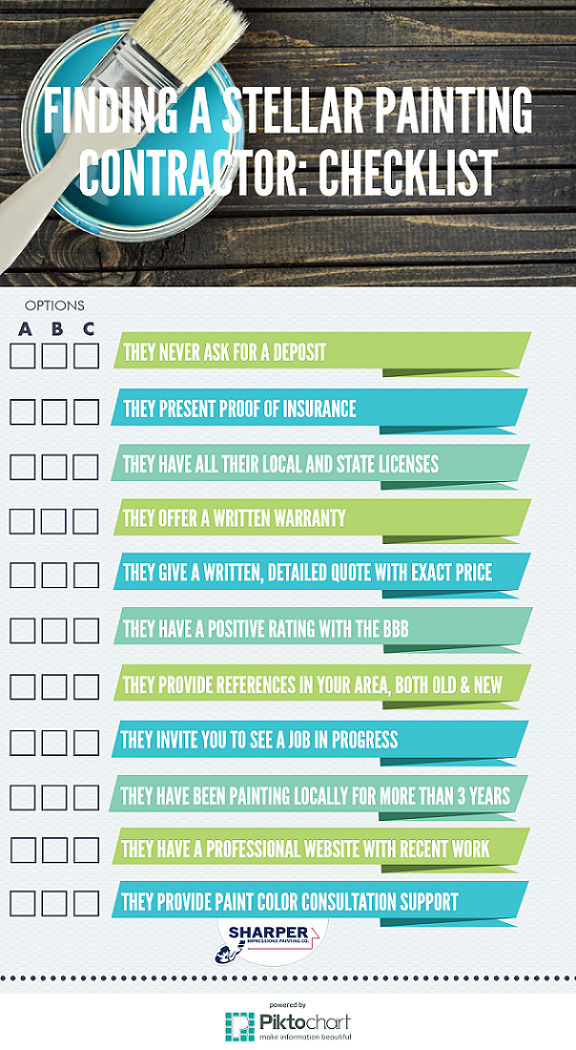Detailed Synopsis For Prepping Your Wall Surfaces Prior To Using Paint
Detailed Synopsis For Prepping Your Wall Surfaces Prior To Using Paint
Blog Article
Authored By-Terp Lindberg
When you're prepping your wall surfaces for paint, it's critical to comply with a methodical procedure to make certain a perfect coating. Start by taking a look at the wall for any damage; this action can make or break your project. When you've identified any kind of problems, cleaning up the surface area effectively is vital, as a dirty wall surface can influence paint attachment. After that, you'll need to spot any flaws and use a primer. Yet there are specific strategies and ideas that can boost your prep work video game-- let's explore those further to accomplish the most effective results.
Assessing Wall Surface Problem
Before you get your paintbrush, take a moment to evaluate your walls' problem. Check for any type of noticeable damage like fractures, holes, or peeling paint. These imperfections can influence just how the paint sticks and looks once it's dry. If you notice any kind of significant damages, you'll need to prioritize repair work before diving into paint.
Look very closely at the structure of your wall surfaces. Is the surface area smooth, or is there structure that might require unique factor to consider? Smooth wall surfaces typically need much less prep, while distinctive surfaces might need even more time to paint evenly.
Additionally, take into consideration the previous paint work. If the old paint is glossy, it mightn't permit brand-new paint to stick appropriately. You'll need to know if your wall surfaces have actually been repainted with oil-based or water-based paint, as this can affect your selection of guide or paint.
Lastly, keep in mind of any wetness concerns. If you see signs of water damages or mold and mildew, address these troubles immediately to stop further problems.
Cleaning the Surface
Once you've examined the problem of your walls, the next step is cleaning the surface. Begin by collecting your products: a container, warm water, a mild detergent, a sponge or cloth, and a scrub brush for harder areas.
Begin at the top edge of the wall and function your way down. just click the next website with warm water in your pail, after that dip the sponge or cloth into the service. Wring it out to stay clear of excessive wetness on the walls.
As you cleanse, pay attention to locations that could've collected dust, oil, or fingerprints. For persistent spots, utilize the scrub brush delicately to avoid harming the paint beneath. Wash your sponge or towel frequently in tidy water to prevent spreading out dust around.
After cleansing, it's important to wipe the walls with a moist cloth to remove any soap deposit. This step guarantees a smooth surface for the new paint to adhere to.
Enable the walls to dry entirely before carrying on to the next preparation actions. This comprehensive cleaning process will certainly aid develop a fresh canvas for your painting project, making certain the very best results.
Patching and Priming
Patching and priming are vital steps in preparing your walls for a fresh layer of paint. First, inspect your walls for any holes, splits, or flaws. Use a premium spackling compound or patching paste to fill up these locations.
Apply the compound with a putty knife, smoothing it out so it's flush with the bordering surface area. Enable it to dry totally, and afterwards sand it lightly till it's smooth and also.
Once you've covered every little thing, it's time to prime. commercial painters in dallas seal the patched locations, guaranteeing the paint sticks correctly and offers an uniform finish. Select a guide ideal for your wall surface type and the paint you'll be using.
Apply the primer utilizing a roller for larger areas and a brush for edges and sides. If your patched locations are substantially huge or permeable, you might intend to apply a second coat of guide after the very first one dries out.
After priming, allowed every little thing completely dry extensively before proceeding to paint. This preparation will not just boost the look of your wall surfaces but also prolong the life of your paint job.
Take your time, and you'll be pleased with the outcomes.
Conclusion
By adhering to these straightforward steps, you can attain a smooth and expert finish on your walls. Begin by evaluating their condition, then clean and spot any type of blemishes prior to using guide. Keep in mind to allow ample drying time and ensure whatever is smooth before you dive into painting. With the right preparation, you'll establish the stage for an attractive makeover in your room. Currently, gather your supplies, take in the fresh air, and prepare to repaint!
